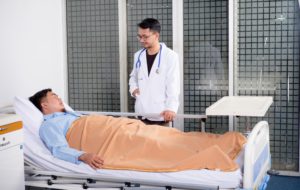Today, we are diving down into the discussion of an endoscopy. What is it and how does it prove useful to gastroenterologists? Let’s find out.
Intro to endoscopy:
What is an endoscopy? Well, an endoscopy is a very useful produce used by doctors. An upper endoscopy is used by gastroenterologists to examine the upper digestive system.
 The endoscopy is carried out using a small tube and a tiny camera. The tube is long and flexible to make its way around and down into the digestive system. Gastro doctors, or specialists in disease of the digestive systems, use an endoscopy to diagnose and treat conditions that affect the esophagus.
The endoscopy is carried out using a small tube and a tiny camera. The tube is long and flexible to make its way around and down into the digestive system. Gastro doctors, or specialists in disease of the digestive systems, use an endoscopy to diagnose and treat conditions that affect the esophagus.
It is also used to diagnose and treat the stomach and the beginning of the small intestine. If you want to know a long word for a future family competition, look no further. The medical term for an upper endoscopy is an esophagogastroduodenoscopy.
There are a few places you may have this procedure done. First, you may have an upper endoscopy at your doctor’s office. Second, you may be in an outpatient surgery center. Lastly, you may be in a hospital.
An upper endoscopy is used to diagnose and occasionally treat conditions that affect the upper part of your digestive system, which includes the esophagus, stomach, and the beginning of the small intestine. The beginning of the small intestine is called the duodenum.
When your doctor will recommend an endoscopy:
There are a few instances where an endoscopy procedure is needed. First, your Orlando gastro doctor may use an endoscopy to investigate signs and symptoms. It may help determine what is causing digestive signs and symptoms.
A few of those symptoms include:
- nausea
- vomiting
- diarrhea
- abdominal pain
- difficulty swallowing
- gastrointestinal bleeding
 Your gastroenterologist may use an endoscopy to diagnose. They may use an endoscopy to collect tissue samples, or a biopsy, to test for diseases and conditions. These samples may be tested for anemia, bleeding, inflammation, cancers of the digestive systems, or diarrhea.
Your gastroenterologist may use an endoscopy to diagnose. They may use an endoscopy to collect tissue samples, or a biopsy, to test for diseases and conditions. These samples may be tested for anemia, bleeding, inflammation, cancers of the digestive systems, or diarrhea.
During an endoscopy, your doctor may treat issues such as removing a foreign object, clipping off a polyp, or widening a narrow esophagus. In certain cases, an upper endoscopy may be used in combination with an ultrasound. Some tools can be passed through the endoscope to create specialized images of the walls of your throat and stomach.
Next week on narrow band imaging:
Also, an endoscopic ultrasound may assist your doctor in creating images of difficult to reach organs. For example, this may be used to take pics of your pancreas. Newer endoscopes provide high-definition video to provide clearer images.
Next week, we are going to continue this discussion. There are new testing procedures that use narrow band imaging. This is a new test that uses a special light that helps doctors better detect precancerous conditions.
